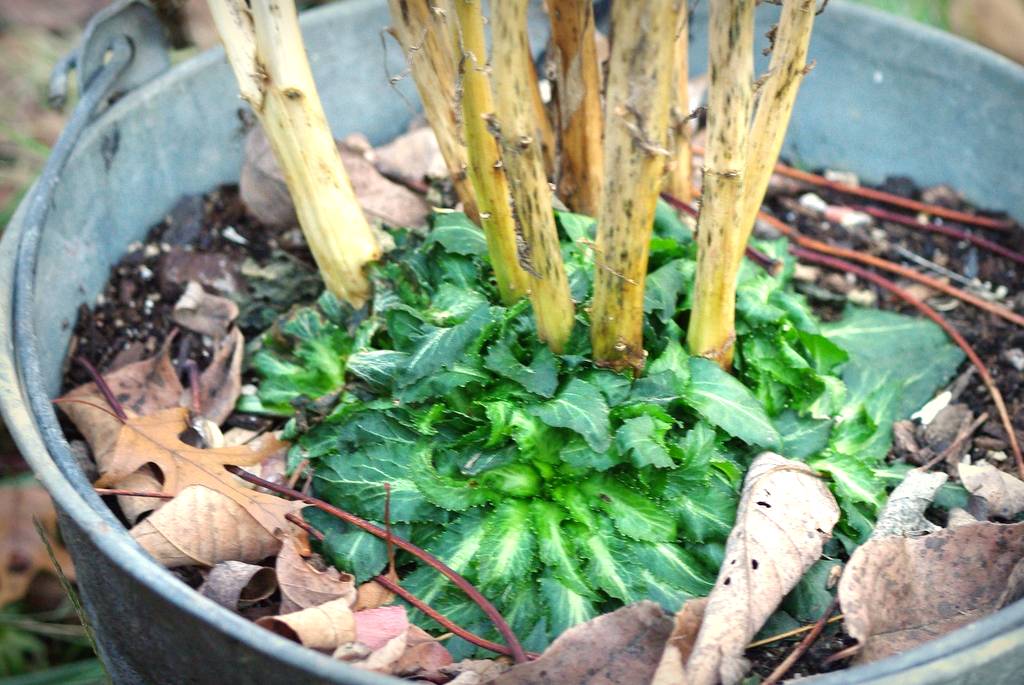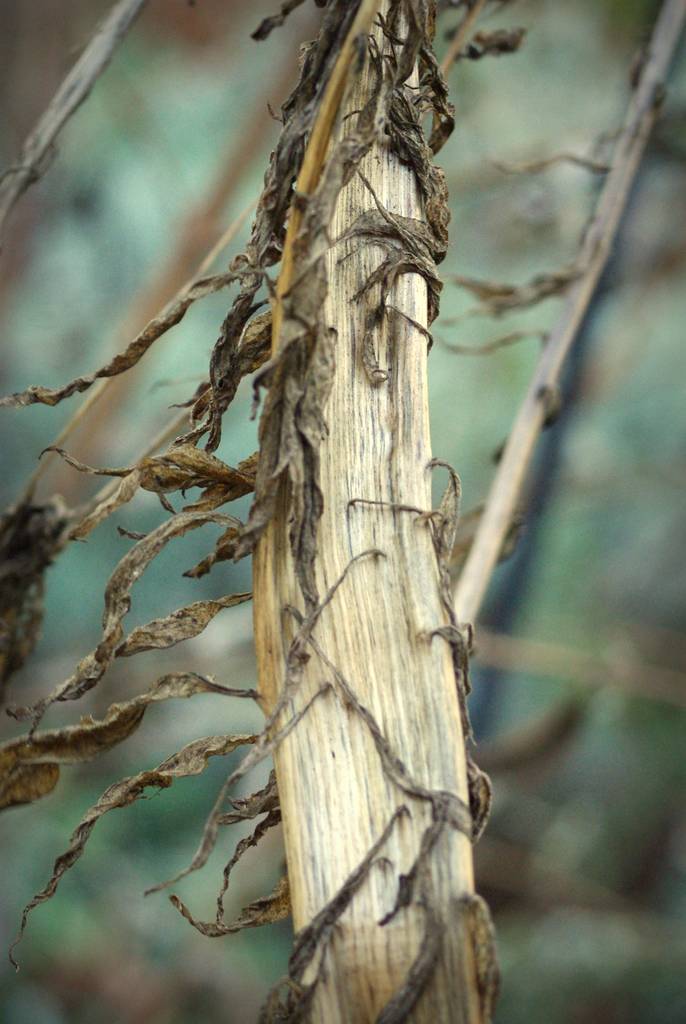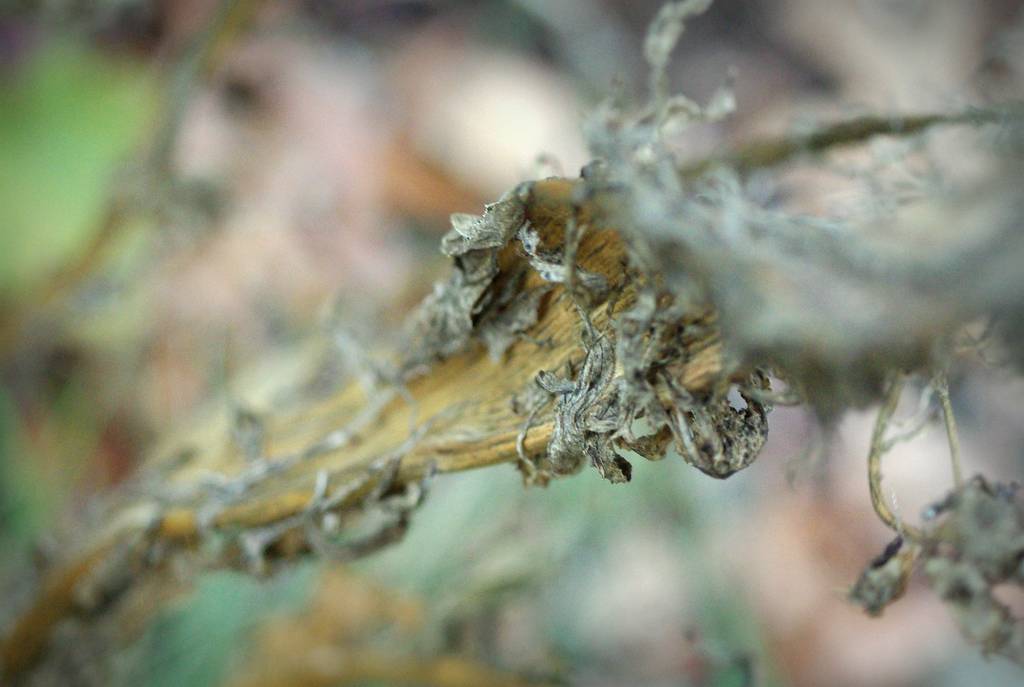lobelia stems, noticed
>> Wednesday, November 27, 2013 –
discovery
Looking out my home office window I see my walkway garden, complete with bird feeder and the I'm-not-letting-it-freeze water barrel. The combination of these two means that quite often there's something to see when I glance out there -- the birds are always fun to watch.
The other day I noticed something different though: my lobelia (Lobelia cardinalis), stems dead and dried at this time of year, looked strange.
Not down there where the basal growth lets me know that this plant is coming back strong in the spring, but up here where spring is nowhere to be seen:
There was something about the way that the light was hitting some of the stems... I realized that they were flattened and strangely wide:
I don't remember seeing this while the stems were still alive, but the foliage and flowers may have distracted me.
There were a couple of other wide stems too, but not all of them showed this feature:
Was this caused by one of the recent freezes, or did this occur while the plant was still growing? I'm guessing freezes, but I can't see any splits or cracks -- any thoughts?
This walkway project was the best thing I've done to my garden in the last few years. Always interesting, always surprising!
.










Looks fasciated to me. You probably just didn't notice it when the plant was leafy.
Oh yes...it's called Fasciation...and it can happen to almost any plant. It was probably that way during the growing season. Sometimes it just randomly happens, sometimes it's from damage to the growing tip, and some plants just seem genetically predisposed to having it happen. I have a Veronicastrum named 'Fascination' that has an unusually high rate of occurrence for this...I've joked that they should just remove that first "n" in it's name and call it V. 'Fasciation' ;-)
I've noticed fasciation in plants before (dandelions, mainly). I didn't know there was a name for it. One more thing to watch for in the garden!
My Angelina sedum did that this summer. I did not know what that was until now. Thanks!
CheyDesignGuy